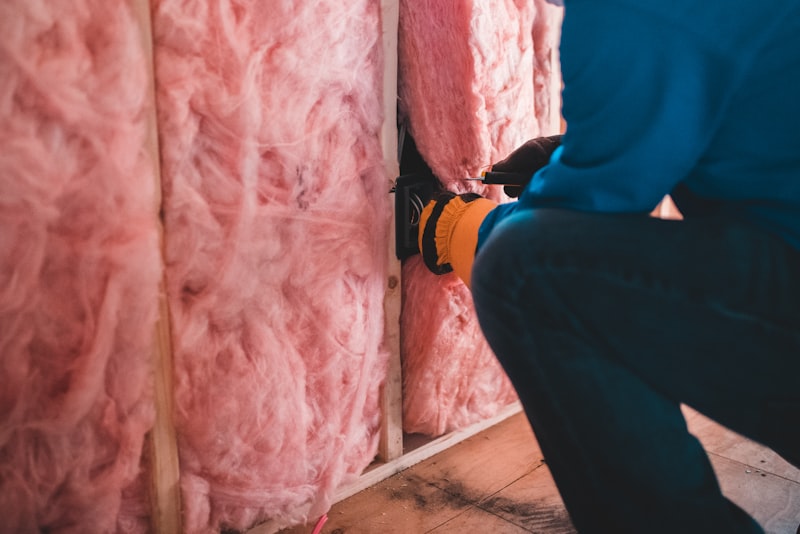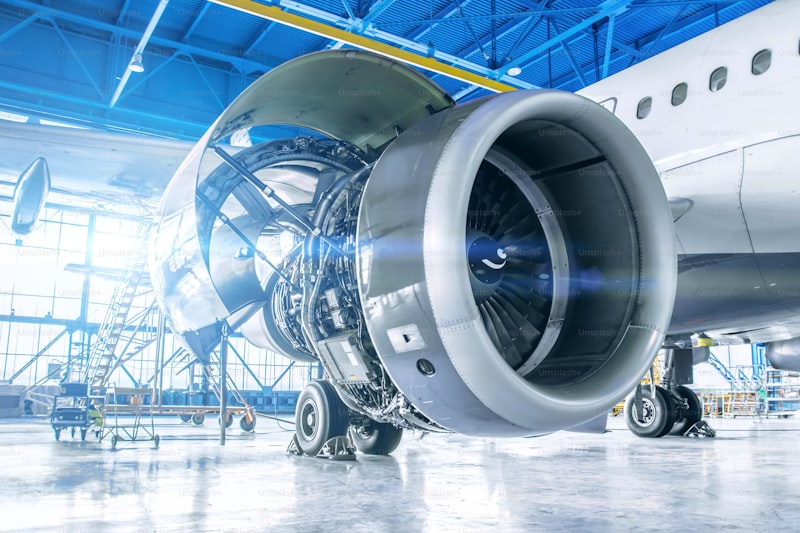Is your car’s turbocharger causing you headaches? Turbochargers are fantastic for boosting engine power, but they can sometimes act up, leaving you stranded or with reduced performance. Let’s dive into how you can troubleshoot and fix common turbocharger issues without breaking a sweat.
Firstly, listen to your car. Strange noises like whining or grinding could signal turbocharger problems. These noises often indicate issues with bearings or the turbo itself. If you hear anything unusual, it’s time to investigate further.
Next, check for leaks. Turbochargers operate under high pressure, so leaks can develop in hoses, intercoolers, or even the turbo unit itself. A visual inspection or a boost pressure test can pinpoint these leaks quickly.
Another common issue is carbon buildup. Over time, carbon deposits can accumulate on the turbine blades or inside the wastegate, affecting performance. Regularly cleaning these components can prevent issues and ensure your turbocharger operates smoothly.
If your car is experiencing a sudden loss of power or sluggish acceleration, the wastegate might be stuck open or closed. This can disrupt the turbocharger’s boost control. A simple adjustment or replacement of the wastegate actuator can often resolve this issue.
Lastly, always ensure proper lubrication and oil flow to the turbocharger. Turbochargers spin at incredibly high speeds, and any disruption in oil supply can lead to catastrophic failure. Regularly check oil levels and change oil at recommended intervals to keep your turbocharger in top shape.
By addressing these common turbocharger issues promptly, you can extend the life of your turbocharger and enjoy enhanced engine performance without costly repairs. Stay proactive, listen to your car, and maintain it regularly to avoid surprises down the road. Turbochargers, when well-maintained, can truly amplify your driving experience.
Boost Your Ride: Expert Tips to Resolve Turbocharger Problems
Turbochargers are marvels of automotive engineering, boosting engine power and efficiency. However, like any mechanical component, they can encounter issues over time. Understanding common turbocharger problems and how to resolve them can keep your ride running smoothly.
Detecting turbocharger problems early is crucial. Look out for symptoms like reduced power, excessive smoke from the exhaust, or unusual engine noises. These signs often indicate issues with the turbocharger, such as worn-out bearings or damaged seals.
Boost leaks are a common culprit behind turbocharger inefficiencies. Inspect all connections and hoses leading to and from the turbocharger for cracks, leaks, or loose fittings. Even a small leak can cause significant performance drops.
Turbochargers rely on proper lubrication and cooling to function effectively. Regularly check oil levels and ensure clean, high-quality oil is used. Inadequate lubrication can lead to premature wear of turbo components. Additionally, monitor coolant levels and inspect for leaks to prevent overheating, which can damage the turbocharger.
The wastegate regulates boost pressure to the turbocharger. Issues with the wastegate can result in overboosting or underboosting, affecting engine performance. Check the wastegate actuator for proper operation and adjust if necessary to maintain optimal boost levels.
Clean air is essential for turbocharger longevity. Clogged or dirty air filters restrict airflow, forcing the turbocharger to work harder. Regularly inspect and replace air filters as recommended by the vehicle manufacturer to ensure maximum efficiency.

For complex turbocharger issues or if you’re unsure about DIY repairs, consulting a qualified mechanic is advisable. They have the expertise and tools to diagnose and repair turbocharger problems effectively, ensuring your vehicle operates at peak performance.

By understanding these expert tips and being proactive in turbocharger maintenance, you can extend the lifespan of your turbocharged vehicle and enjoy a smoother, more powerful driving experience. Turbochargers, when properly cared for, can significantly enhance your vehicle’s performance without compromising reliability.
Turbo Troubles? Here’s Your DIY Guide to Fixing Car Boost Issues
Ever felt that sudden loss of power when you step on the gas? Your car’s turbocharger might be acting up. Don’t worry; fixing turbo issues doesn’t always mean a trip to the mechanic. With a bit of know-how and some tools, you can tackle common turbo problems yourself. Let’s dive into the DIY guide to resolving car boost issues.
First things first, what does a turbocharger do? Think of it as a power booster for your engine. It uses exhaust gases to spin a turbine, which compresses air going into the engine. This compressed air allows more fuel to be burned, resulting in more power from the engine—simple yet powerful stuff.
-
Boost Leak: This is when there’s a leak in the hoses or intercooler piping that carry pressurized air. It can cause a loss of power and efficiency.
-
Wastegate Issues: The wastegate controls how much boost the turbocharger produces. If it’s stuck open or closed, you’ll experience either too much or too little boost.
-
Dirty or Sticking Turbo VNT Mechanism: The Variable Nozzle Turbine (VNT) mechanism can get gummed up with carbon deposits, affecting its performance.
-
Boost Pressure Sensor Faults: Modern cars have sensors that monitor boost pressure. If these sensors fail, your engine may not be getting the right amount of boost.
-
Inspect for Leaks: Check all hoses and piping for cracks or loose connections. Replace or tighten as necessary.
-
Wastegate Maintenance: Clean and lubricate the wastegate actuator to ensure it moves freely. Adjust it according to manufacturer specifications if needed.
-
Clean the VNT Mechanism: Use a specialized cleaner to remove carbon buildup on the VNT mechanism. Be gentle to avoid damaging delicate parts.
-
Check and Replace Sensors: Use an OBD-II scanner to check for error codes related to boost pressure sensors. Replace faulty sensors if indicated.
By addressing these common turbo issues yourself, you can save time and money. Just remember, if you’re unsure or uncomfortable with any of these procedures, it’s always best to consult a professional mechanic. Keeping your turbocharger in top shape ensures your car delivers maximum performance when you need it most.
Mastering Turbocharger Repair: Essential Steps for Car Enthusiasts
If you’re a car enthusiast looking to elevate your knowledge and skills, mastering turbocharger repair can be a game-changer. Turbochargers are vital components in modern engines, enhancing performance and efficiency by compressing air before it enters the engine cylinders. However, like any mechanical part, they require maintenance and occasional repair to ensure optimal functioning.
Before diving into repair, it’s crucial to grasp how a turbocharger works. Imagine it as a mini jet engine for your car. As exhaust gases exit the engine, they spin a turbine connected to a compressor that forces extra air into the engine. This process, known as forced induction, significantly boosts power output without increasing engine size.
Detecting issues early can prevent costly repairs down the road. Look out for signs such as decreased power, unusual noises (like whining or grinding), excessive smoke from the exhaust, or visible damage to the turbocharger itself. Addressing these promptly can extend the turbocharger’s lifespan and keep your engine running smoothly.
-
Diagnosis: Begin by diagnosing the problem accurately. This involves using diagnostic tools to assess boost pressure, inspecting for leaks, and checking the turbocharger for physical damage.
-
Disassembly: Once diagnosed, carefully disassemble the turbocharger. Pay attention to each component’s condition and cleanliness, as any foreign particles or debris can further damage the turbo.
-
Cleaning and Inspection: Thoroughly clean all parts using appropriate solvents and inspect for wear, cracks, or signs of overheating. The turbine and compressor wheels should spin freely without any resistance.
-
Replacement of Components: Replace damaged or worn-out parts such as seals, bearings, and shafts. It’s crucial to use OEM or high-quality replacement parts to ensure reliability and performance.
-
Reassembly and Testing: After replacing components, reassemble the turbocharger following manufacturer specifications. Once assembled, test the turbocharger under controlled conditions to verify proper functioning and boost levels.
-
Installation: Finally, reinstall the turbocharger into the engine, ensuring all connections are secure and tightened to specifications. Conduct a final check for leaks and test-drive the vehicle to confirm that the issue has been resolved.
Rev Up Your Engine: Top Solutions for Turbocharger Malfunctions
First off, let’s understand why turbochargers go rogue. These nifty devices spin at incredibly high speeds, pushing more air into your engine for added power. Over time, though, wear and tear can cause issues like oil leaks, worn-out bearings, or even compressor wheel damage. When your turbocharger starts acting up, you might notice decreased power, strange noises, or even smoke from the exhaust—signs that something’s amiss under the hood.
One of the most common problems is turbocharger lag. Ever felt that annoying delay when you hit the gas pedal? That’s turbo lag, often caused by a build-up of carbon deposits or a faulty wastegate. Cleaning out those deposits or replacing the wastegate can often solve this issue, giving you smoother acceleration and better throttle response.
Oil leaks are another pesky problem. Turbochargers rely on a steady flow of oil for lubrication and cooling. If there’s a leak, not only does it mean potential damage to other engine components, but it also affects the turbo’s performance. Identifying and fixing the source of the leak—be it from seals or connections—can save you from bigger headaches down the road.
Sometimes, the issue lies deeper within the turbocharger itself. Components like the bearings or the turbine can wear out over time, leading to that dreaded turbo whine or even failure to boost altogether. Rebuilding or replacing these components requires expertise but can breathe new life into your turbocharger and keep your engine running smoothly.
Lastly, preventive maintenance is key. Regularly servicing your turbocharger and using high-quality oil can significantly extend its lifespan and prevent future issues. It’s like giving your car a turbocharger spa day—clean, refreshed, and ready to perform.
So, whether you’re experiencing turbo lag, strange noises, or just want to keep your turbocharger in top shape, these solutions will help you rev up your engine and get back on the road with that turbocharged smile.
Turbocharger TLC: Simple Fixes to Restore Your Car’s Performance
First off, let’s talk about cleaning. Just like anything else, turbochargers need regular cleaning to stay in tip-top shape. A common issue is carbon buildup, which can restrict airflow and reduce efficiency. Using a specialized cleaner designed for turbo systems can help dissolve these deposits and restore lost power. It’s like giving your engine a breath of fresh air!
Next, check your air filters. Clogged or dirty filters can make it harder for your turbocharger to do its job effectively. Replacing them at regular intervals ensures that your engine gets the clean air it needs to perform at its best. Think of it as changing the sheets on your bed – fresh filters mean better airflow and better performance.
Another thing to consider is checking for leaks in your turbo system. Even a small leak can cause a drop in performance, as your turbocharger won’t be able to build up the necessary pressure. Inspecting hoses and connections for cracks or loose fittings and replacing any damaged parts can help restore your car’s power and efficiency.
Lastly, don’t forget about your oil. Turbochargers operate at high speeds and temperatures, which means they need proper lubrication to prevent wear and tear. Using a high-quality synthetic oil recommended for turbocharged engines can help maintain optimal performance and extend the life of your turbocharger.
Taking care of your turbocharger doesn’t have to be complicated. With these simple fixes, you can keep your engine running smoothly and enjoy the thrill of the open road. So, give your turbocharger a little TLC – your car will thank you for it!
Frequently Asked Questions
Can I prevent turbocharger issues with regular maintenance?
Learn how regular maintenance can prevent turbocharger issues by ensuring proper lubrication, monitoring for leaks, and addressing wear before it leads to costly repairs.
How can I diagnose turbocharger problems in my car?
Learn how to diagnose turbocharger problems in your car efficiently with these steps: Listen for abnormal noises, check for decreased power output, look for excessive smoke from the exhaust, and inspect for oil leaks around the turbocharger. These indicators can help pinpoint potential issues with your turbocharger system.
How much does it cost to fix a turbocharger?
Learn about the typical costs associated with repairing a turbocharger, including factors that influence pricing and average expenses.
What are the steps to repair a turbocharger myself?
Learn how to repair a turbocharger on your own with these step-by-step instructions. From disassembly to reassembly, discover the essential tasks and tools needed for successful DIY turbocharger repair.
What are the common symptoms of a failing turbocharger?
Learn about the common symptoms of a failing turbocharger with our concise guide. Discover how to identify issues such as reduced engine power, excessive smoke from the exhaust, and unusual noises. Understand when it’s crucial to seek professional assistance to avoid further damage.


